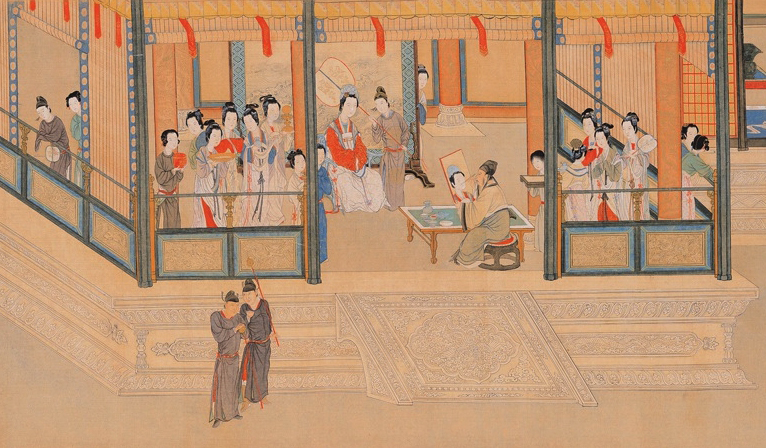Top 10 Chinese paintings (VI): Spring Morning in the Han Palace

Spring Morning in the Han Palace
Created by the Ming Dynasty (1368-1644) painter Qiu Ying (c.1498-c.1552), Spring Morning in the Han Palace is a silk scroll painting noted for its bold use of colors. With a length of 2,038.5 centimeters and a width of 37.2 centimeters, it is considered very large relative to other similar decorative artwork. It is now housed at the “National Palace Museum” in Taipei.
This long scroll is a traditional Chinese figure painting that depicts the life of concubines in the court. The hairstyles and clothing of people in the scroll are from the Han Dynasty (206 BC-AD 220), but the Ming style is evident in the palace and its furnishings.
This scroll is a conceptualization of various daily activities in the palace of the Han Dynasty in the early spring, such as enjoying the zither, calligraphy, painting, playing chess as well as appreciating antiquities and flowers.
With an intricate composition that progresses from right to left, this work features crisp brushwork and beautiful colors. The scroll begins with an outside view of the palace, showing willow branches swaying in the mist. The willow signifies the spring, and mist gives the sense that it is morning.
Concubines account for the largest portion of the 115 characters in the painting, which also includes maids, imperial children, eunuchs and painters. The figures are dressed in bright colors, and they are depicted making various gestures and adopting an assortment of postures. They appear to be busy, but a sense of leisure permeates the work. Trees and rocks decorate and punctuate the garden scenery of the lavish palace architecture.
This complicated composition reflects the painter’s extraordinary talent for observation and exquisite ability to paint realistically.
Qiu Ying is one representative painter in the Ming Dynasty. His courtesy name was Shifu, and his pseudonym was Shizhou. He was born to a peasant family in Taicang in Jiangsu Province. After moving with his family to Suzhou, Jiangsu Province, Qiu Ying became an apprentice lacquer artisan.
He later learned the art of painting and imitated ancient works of the Tang (618-907) and Song (960-1279) dynasties, becoming so successful that his copies and the authentic paintings were indistinguishable from each other.
Though Suzhou’s Wu School encouraged painting in ink washes, Qiu Ying also painted in the green-and-blue style and incorporated different techniques into his paintings. He painted with the support of wealthy patrons, creating images of flowers, gardens, religious subjects and landscapes in the style of the Ming Dynasty.
Regarded as one of the Four Great Masters of the Ming Dynasty along with Shen Zhou (1427-1509), Wen Zhengming (1470-1559) and Tang Yin (1470-1523), Qiu specialized in the gongbi brush technique. His use of the brush was meticulous and refined, and his depictions of landscapes and figures were orderly and well proportioned. In addition to being elegant and refined, his paintings are also quite decorative.
